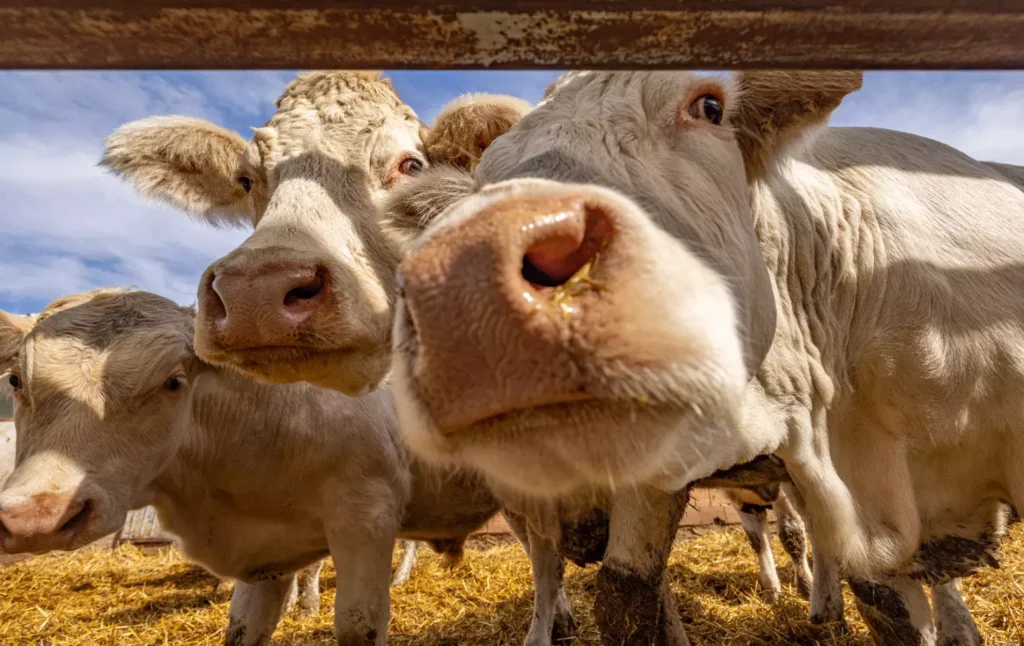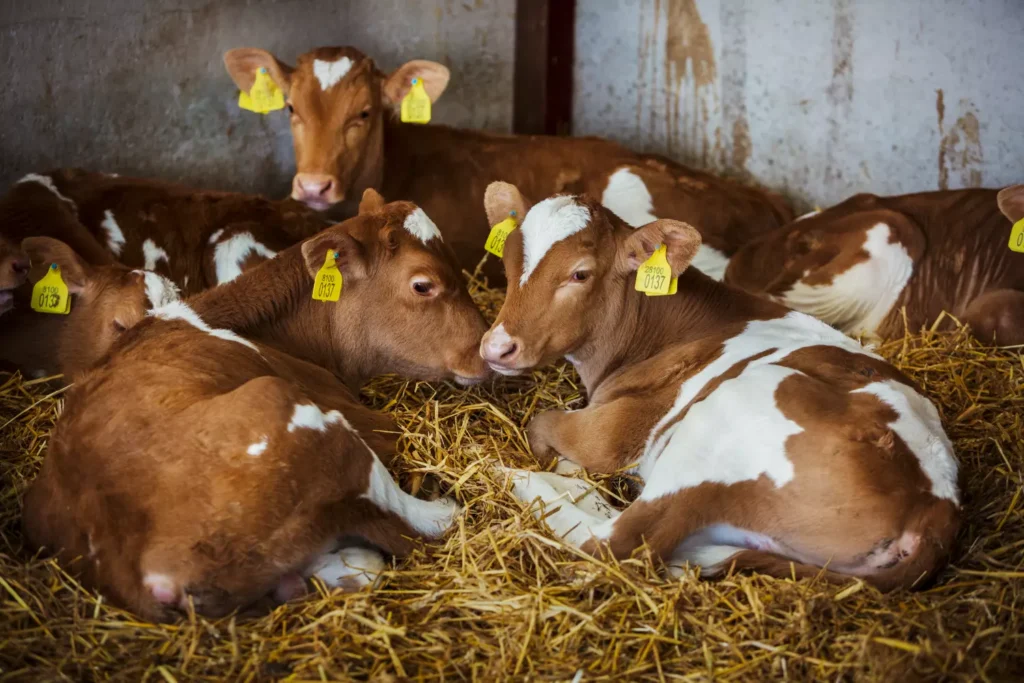
Johne's disease is a chronic infection that causes a gradual thickening of the intestinal wall by reducing the absorption of nutrients. This leads to the loss of weight, diarrhea, and death in cattle. Despite the observation of a high rate of cows infected, a few herds of meat have reached the clinical stage of Johne's disease because it is possible to detect the infection in the preclinical stage by faecal culture or serological tests.
Animals in this stage “silent” have chronic diarrhea and lost weight despite having a normal appetite. Give positive faecal culture for MAP and may have antibodies in the serum ELISA-commercial or testing of immunodiffusion in agar gel.
Symptoms of Johne's Disease
Johne's disease is the most common disease of dairy cattle, and also occurs in sheep, goats and pigs. The infection is caused by Mycobacterium avium subspecies paratuberculosis, a bacterium resistant related to the agents of leprosy and tuberculosis. It is found throughout the world and is prevalent in herds of ruminants. The disease is highly contagious and is spread by manure and infected by contact between animals, particularly through feeders contaminated with manure.
The infected cattle with Johne's disease sheds bacteria in their feces. This is the main mode of transmission to other herds, but the infection is also transmitted by ingestion and through the environment, including drinking water. The bacteria can survive in the environment for a year or more, as they are protected by a cell wall resistant and can withstand factors degrading treatment such as ultraviolet light, heat, and drying. This is the reason why an infected animal it take so long to show symptoms and become a source of contamination and transmission.
The infection begins with the ingestion of the bacteria, usually during early lactation when cows ingest colostrum contaminated. The bacteria may also be transmitted to the calves and young people through contaminated milk or udder of infected mothers during breastfeeding. Calves may also swallow the bacteria licking or biting contaminated areas, and can be infected in the uterus.
The blood tests are very sensitive for the detection of Johne's disease in the early stages, although not detect all infected animals. However, once the disease progresses to Stage II, the bacteria can escape from the intestine and eliminated in the manure. This poses a serious threat because the infection often are hidden, to other herds. The test fecal current does not detect infected animals in this stage of the disease.
The herds in stage III usually show a decreased milk production, reduced fertility and increased susceptibility to other bacterial diseases or otherwise. It is known that the heifers infected in particular they deteriorate quickly and produce little milk or reproduce quickly once they have reached this stage.

Diagnosis
The detection of bacteria in blood, urine, or feces is often very difficult and requires specialized laboratory equipment. Can be used serological tests such as ELISA or radial immunodiffusion in agar gel (AGID) to detect the infection of the disease in herds. These tests are fairly accurate, but do not detect all infections. Some of these tests are influenced by cross-reactions with other bacterial diseases, and can give false positive results.
Once an animal is infected with Johne's, eliminate the bacteria in the manure and pollute the environment, particularly the water and food sources. The bacterium is also found in the milk produced by the cow infected and ingested by calves. The calves can become infected in utero to the drink colostrum contaminated, or by direct contact with the infected mother, but this is less common.
The infected cattle deteriorates in stages, being the most obvious symptom diarrhea liquid. Bleeding in the stomach, intestines, and lymph nodes are common. The bacteria also can infect the liver and the spleen. As the infection progresses, the animals slimming and lose weight until they become emaciated and develop jaw of a bottle. A single clinical case of the disease in a herd usually represents only the “tip of the iceberg”, as it is likely that many other animals are infected but do not show signs of disease.
If signs of the disease, a laboratory can confirm the presence of the bacteria by using a PCR test for Johne's high-performance. This test is much quicker and much less expensive than a faecal culture and does not require the sacrifice of an animal for histopathology. It is recommended that this test be performed in a laboratory that participates in an annual program of test of competence for the specific trial.
A good program to control the spread of Johne's disease is a combination of control measures, including vaccination and periodic testing of the flock. Prepare a plan of health and well-being of the flock, together with your vet, that includes controls for Johne's disease and, if necessary, remove infected animals from his flock as soon as possible. Also, try buying cattle and replacement bulls herd of low-risk, if you are participating in the voluntary program of testing of herds.
Prevention
As in all infectious diseases, prevention requires multiple steps. Producers should work with their veterinarian to develop a plan of health of the flock that includes biosecurity, evidence of herd animal handling and high-risk. Should also be aware that other causes of weight loss may be present in the ruminant thin, including dental disease, parasitism, malnutrition, or disease-specific as the cryptosporidiosis in calves.
Once a herd is infected, it will continue to shine the bacterium to the environment for years. As the infection progresses, it can cause severe diarrhea and eventually death in cattle.
Johne's disease is primarily spread through the fecal-oral route, when the animals eat bacteria from manure, or infected food or pasture contaminated. The bacteria can also pass through the placenta and in the saliva, or milk of cows infected. Calves are suckled by their mothers have a high probability of becoming infected while breastfeeding. As the infection progresses, infected cows excretarán bacteria through her nipples and udders, where it is then deleted in the manure. The bacteria can then contaminate the soil and water.
The sheep and the goats have a greater susceptibility to Johne's disease than cattle, and an animal that is positive can quickly infected the herd. As a result, it is important to add only members of the pack who test negative. Those of herds with positive members must be quarantined for at least three months and re-take the test before they are allowed to join the pack.
Due to the long incubation period, it is possible that the signs of Johne not appear until the animal is very sick. This means that a dairy cow may be slaughtered due to poor production or mastitis, without ever linking it with the Johne's disease (the “iceberg”). It is important to perform tests on all the flock, so that all samples of blood and milk can be analyzed to detect the presence of MAP. These tests can be crops, which are the bacteria itself, or a reaction assays polymerase chain reaction (PCR) to look for antibodies against MAP in the blood and the milk.

Treatment
Cattle are more likely to be infected with MAP during their first two to five years of life, however, the infected animals take months or years to show signs of clinical disease. During this time, the infected animals continue to eliminate MAP through their manure and pass it silently to other susceptible animals in the herd.
There are a number of management practices that may reduce the risk of Johne's disease in the operations of dairy cattle, and beef. Buy replacement animals-only herds with negative results for Johne's disease is a good starting point; when this is not possible, it is important to assess the health of the flock through the statements of the owner and the veterinarian.
It is also important to use colostrum that contains no MAP and no colostrum ‘borrowed’ from other herds. It is also a good idea to avoid the use of products such as milk or colostrum, which have been combined, where it has been detected MAP through the ELISA tests.
It has been shown that the vaccines to control Johne's disease are both effective in dairy herds, as of flesh. Although it is not a cure, these vaccines reduce the severity of the disease and help prevent complications such as reproductive failures, and diarrhea in calves.
The best strategy to reduce the incidence of Johne's disease (or other conditions as Q fever in herds) is to focus on prevention. To avoid the introduction of colostrum, manure or milk of infected in the operation and manage the operations of feeding, calving, grazing and motherhood to limit the exposure of calves and young people to these sources of infection, the flocks may greatly reduce the incidence of the disease.